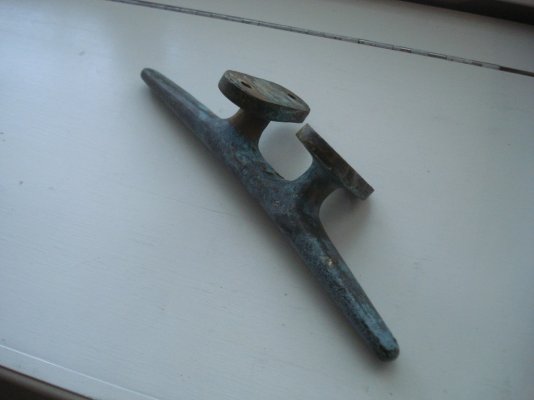ARoss
Guru
- Joined
- Nov 17, 2007
- Messages
- 637
- Vessel Name
- My Yuki
- Vessel Make
- 1973 Marine Trader 34
Irene hit me with another small surprise -- in inspecting a* midships cleat I found that the load had not only loosened the cleat, but bent one of the mounting brackets approx 20 deg from horizontal.* This thing is 10" long, bronze, and anything similar on Ebay is $50+. Before ordering, I'd like advice on whether this thing can be straightened, or would heating, bending, etc. affect the structure to make it brittle or otherwise subject to further failure?
*
*
*
*

